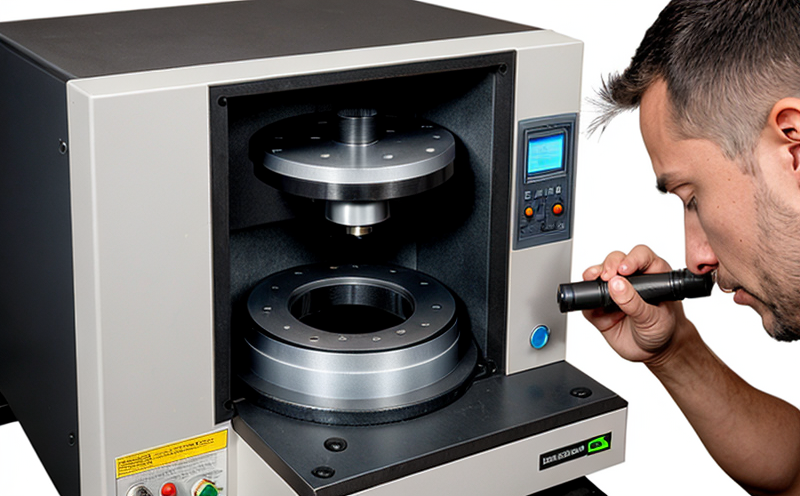ASTM E340 Microstructure Examination of Welds
The ASTM E340 standard provides a detailed methodology for examining and analyzing microstructures in welds. This test is crucial for ensuring the integrity, quality, and reliability of welded components across various industries, including aerospace, automotive, construction, and manufacturing.
Microstructure examination involves the visual inspection and analysis of the internal structure of materials using optical microscopy or electron microscopy techniques. The ASTM E340 standard outlines specific procedures to prepare specimens for examination, ensuring consistent results that are essential for quality control and compliance with international standards.
The primary goal of this test is to identify any defects, inclusions, or variations in the microstructure that could affect the performance and longevity of welded components. By adhering strictly to ASTM E340, laboratories can provide reliable data that helps manufacturers make informed decisions about material selection and process optimization.
One key aspect of this test is the preparation of the specimen, which involves cutting or grinding a small piece from the weld to be examined. This sample must then undergo polishing and etching processes to reveal its internal structure clearly under the microscope. The choice of etchant and the duration of etching can significantly influence how well certain features are visible.
Once prepared, the specimen is placed on a mounting block and viewed through an optical or scanning electron microscope (SEM). Microscopists trained in ASTM E340 methodology will observe various aspects such as grain size, composition distribution, inclusion type, and porosity. These observations help determine whether the weld meets specified requirements regarding mechanical properties and service life.
Another important factor is the comparison of the current examination with previous analyses or industry benchmarks. This allows for tracking trends over time and identifying potential issues early on before they become critical problems in production or use phases.
The ASTM E340 standard also specifies criteria for acceptable weld structures based on these observations. Compliance with these standards ensures consistency across different facilities performing similar tests, thus enhancing overall confidence in the results obtained from such examinations.
In summary, ASTM E340 microstructure examination of welds plays a vital role in ensuring high-quality welded products by providing detailed insights into their internal structures. It supports compliance with relevant international standards while offering valuable information for continuous improvement in manufacturing processes.
- Consistent and reliable results through standardized procedures
- Identification of potential defects early in the production cycle
- Enhanced confidence in weld quality due to adherence to recognized standards
- Aids in process optimization leading to improved product performance
Why Choose This Test
- Comprehensive Analysis: Provides a thorough examination of the internal structure of welds, identifying defects and ensuring compliance with industry standards.
- Industry Recognition: Widely accepted in regulatory bodies and recognized by major industries for its reliability and accuracy.
- Enhanced Quality Control: Ensures that products meet specified requirements regarding mechanical properties and service life, supporting long-term performance expectations.
- Process Optimization: By understanding the microstructural characteristics of welds, manufacturers can refine their processes to achieve optimal results consistently.
- Regulatory Compliance: Helps companies comply with international standards and regulations specific to their sector, reducing risks associated with non-compliance.
- Precision in Results: Utilizes advanced microscopy techniques that offer precise measurements and observations of the weld microstructure.
International Acceptance and Recognition
The ASTM E340 standard has gained widespread acceptance and recognition among regulatory bodies, industry associations, and manufacturers worldwide. Its use is mandated by numerous standards organizations, including ISO (International Organization for Standardization) and ASME (American Society of Mechanical Engineers).
Many countries have adopted ASTM E340 as part of their national testing protocols to ensure consistent quality across borders. This widespread acceptance underscores the importance of this test in maintaining global standards for welded products.
The standard's rigorous guidelines and well-established procedures make it a preferred choice for labs and facilities involved in quality assurance programs, research projects, and production line inspections. By adhering strictly to ASTM E340, laboratories can provide results that are trusted by clients globally.
Furthermore, compliance with this standard facilitates international trade by ensuring uniformity in testing methods and interpretations across different regions. This consistency reduces barriers to entry into new markets and promotes fair competition within the industry.
Use Cases and Application Examples
The ASTM E340 microstructure examination of welds finds application in various sectors where structural integrity is paramount, such as aerospace, automotive, construction, and manufacturing. Here are some specific use cases:
- Aerospace Industry: Ensuring that critical components used in aircraft structures meet stringent safety standards.
- Automotive Sector: Verifying the quality of welds in car bodies to enhance durability and reduce weight.
- Construction Field: Inspecting large structural elements like bridges or tall buildings for potential flaws that could compromise safety.
- Manufacturing Industry: Quality assurance during production runs where high precision is required, especially in sectors producing complex machinery.
In each of these areas, the ability to accurately examine and analyze the microstructure of welds plays a crucial role in maintaining product reliability and safety. The insights gained from this examination contribute significantly to ongoing improvements in manufacturing techniques and material selection processes.





